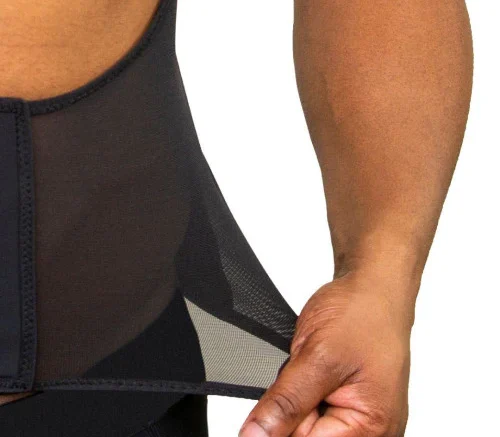When developing wearable medical technology, the interaction between the device and the human body is critical. Material selection is a key factor, as it directly affects patient comfort, device accuracy, and regulatory compliance. With wearable home health technology on the rise—especially for the baby boomer generation—ensuring that your medical garment is made from the right textile is essential to its success.
Key Considerations for Material Selection
Selecting the right fabric for a wearable medical device involves multiple factors:
Biocompatibility: The fabric must not cause skin irritation, allergic reactions, or toxicity when in prolonged contact with the skin.
Durability: It should withstand daily wear, repeated use, and potential exposure to moisture or cleaning agents.
Flexibility & Comfort: Patients need to wear these garments for extended periods, so the fabric should feel comfortable while allowing for freedom of movement.
Manufacturability: The material should be easy to cut, sew, and form into the necessary garment structure without damage.
Sensor Integration: For smart medical wearables, the fabric must accommodate embedded sensors and electronic components without interfering with their function.
The Importance of Biocompatibility
Biocompatibility is one of the most crucial factors in wearable medical garment development. If a fabric reacts negatively with the skin, it can cause irritation, allergic responses, or even impact the accuracy of medical readings. For example:
ISO 10993-5 Cytotoxicity Testing evaluates whether a material releases toxic substances that could damage human cells.
ISO 10993-10 Sensitization Testing assesses allergic responses that could develop over time.
Hemocompatibility Testing is necessary for materials that come into direct contact with blood to ensure they do not cause adverse reactions.
Failure to choose a biocompatible material can result in inaccurate diagnostics, costly product redesigns, and reputational damage.
Balancing Comfort and Durability
A medical garment must be durable enough to withstand daily use while remaining comfortable for the patient. Factors to consider include:
Breathability: Ensuring proper air circulation to prevent overheating and excessive sweating.
Moisture-Wicking Properties: Keeping the skin dry to reduce irritation and discomfort.
Softness: Reducing friction that could lead to skin irritation or sores.
Resistance to Wear and Tear: Maintaining structural integrity over time, especially in garments designed for 24/7 use.
Conducting short-run field tests with real users can provide valuable feedback on comfort, fit, and performance, allowing for adjustments before full-scale production.

The ThermApparel vest combines lightweight design and advanced cooling technology to provide discreet, dry comfort for daily wear. Balancing durability with flexibility, it ensures comfort and mobility in both humid and dry conditions.
Regulatory Compliance and Safety Standards
Regulatory compliance is another essential aspect of material selection. Depending on the intended use, wearable medical devices must meet safety and performance standards such as:
IEC 60601-1: General safety requirements for medical electrical equipment.
ISO 10993: Biocompatibility testing for medical devices.
ANSI/CAN/UL 2900: Cybersecurity standards for network-connected medical products.
Why Fieldtex?
With 50 years of contract manufacturing experience, Fieldtex specializes in developing high-quality medical garments and wearable textile solutions. Our expertise in material sourcing, biocompatibility considerations, and regulatory compliance ensures that your medical wearables meet industry standards while prioritizing patient comfort and device functionality. Whether you need a holster for an LVAD, a monitoring vest, or a custom medical pouch, our team can help bring your vision to life.
By carefully selecting the right fabric and following industry best practices, you can ensure that your wearable medical device is safe, effective, and comfortable for the end user. Need guidance on material selection? Fieldtex is here to help.

